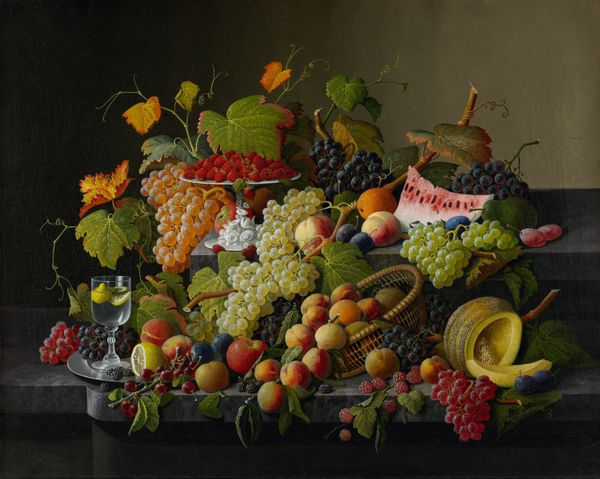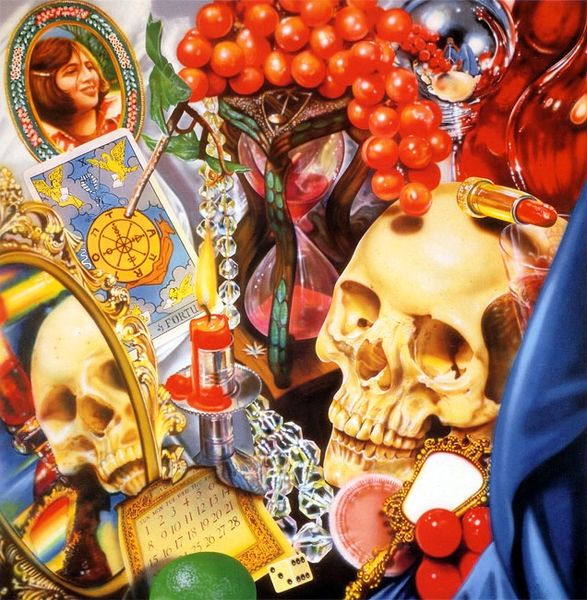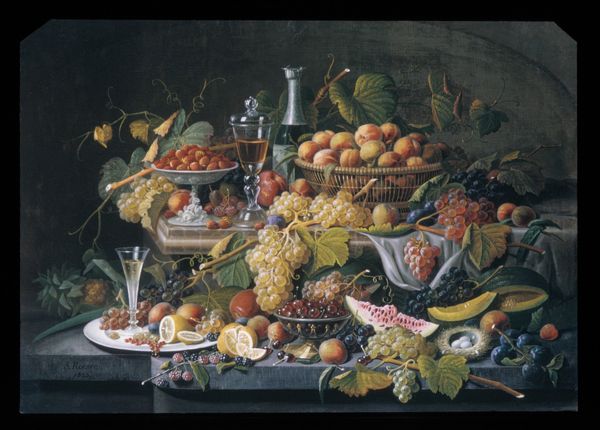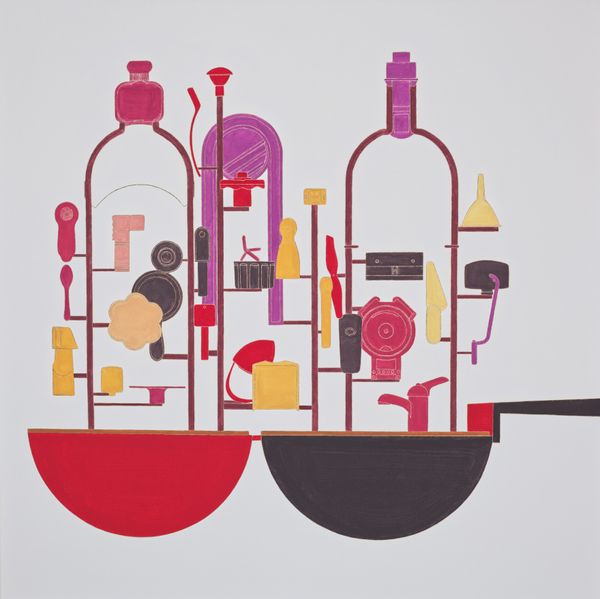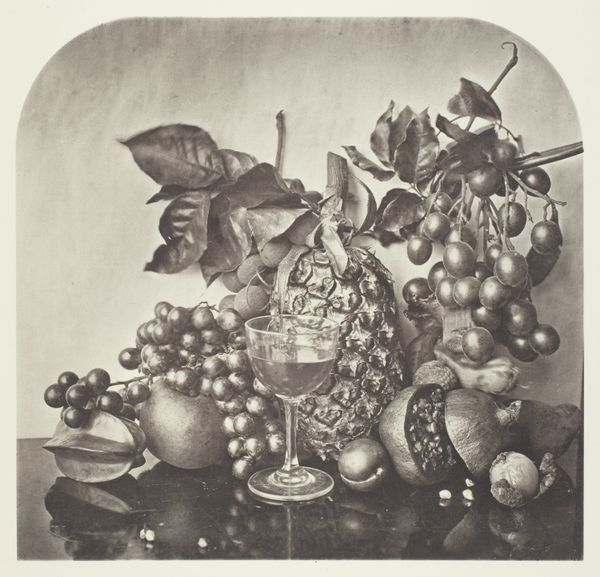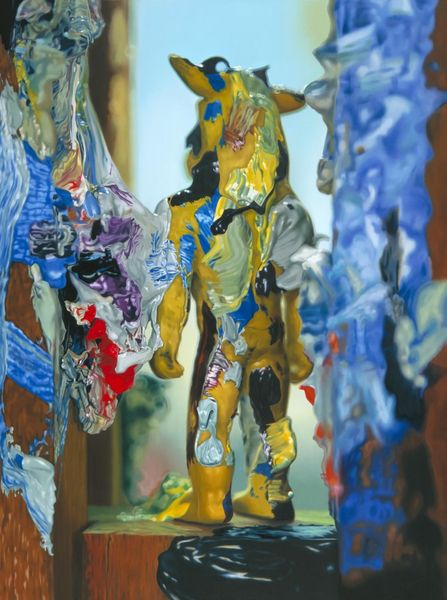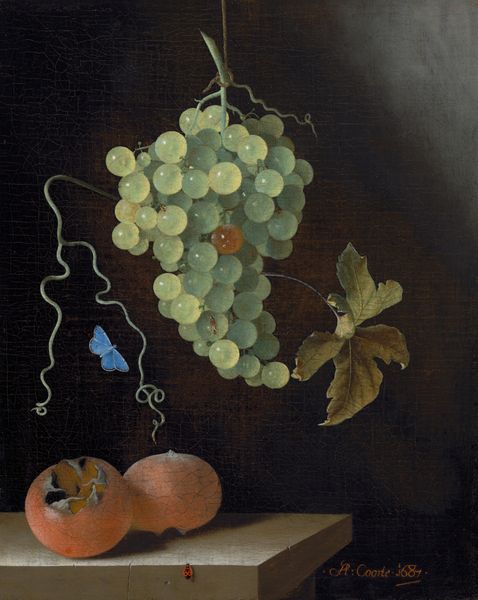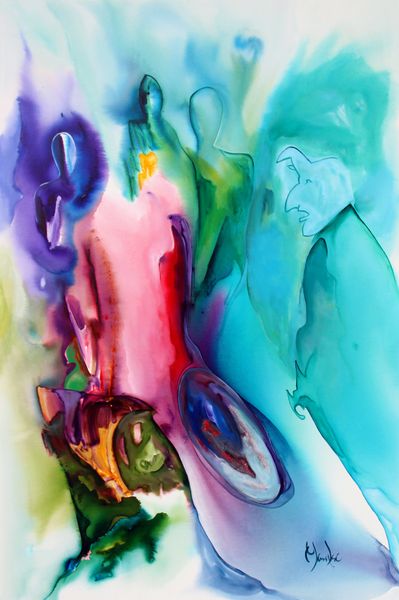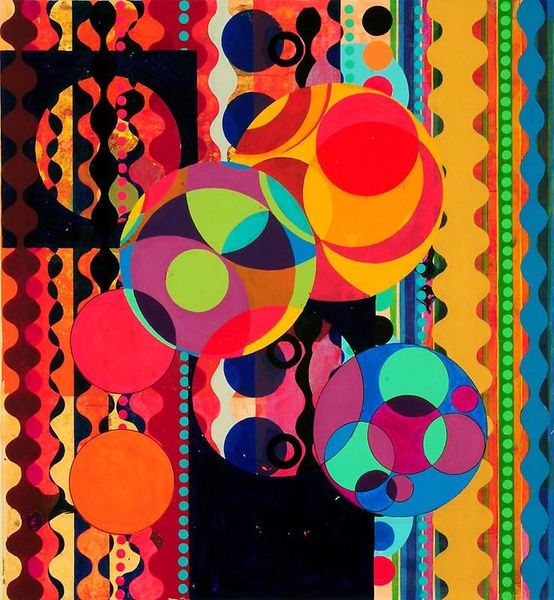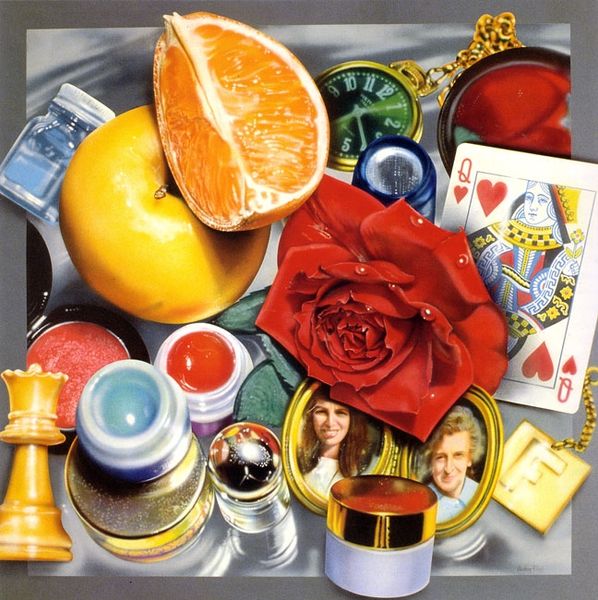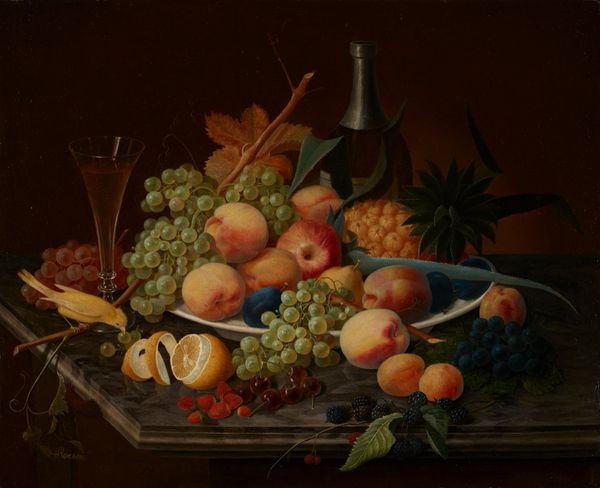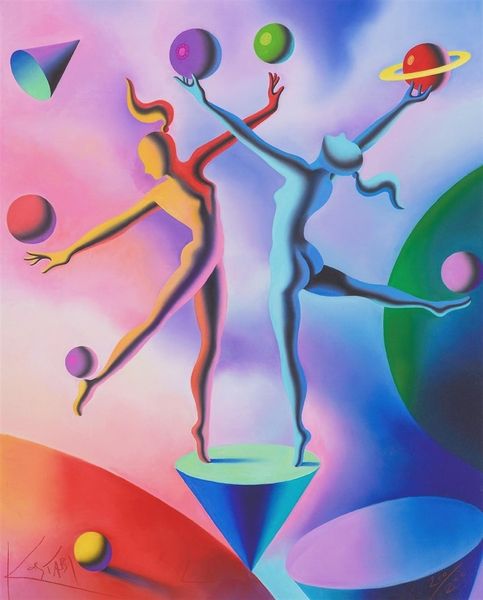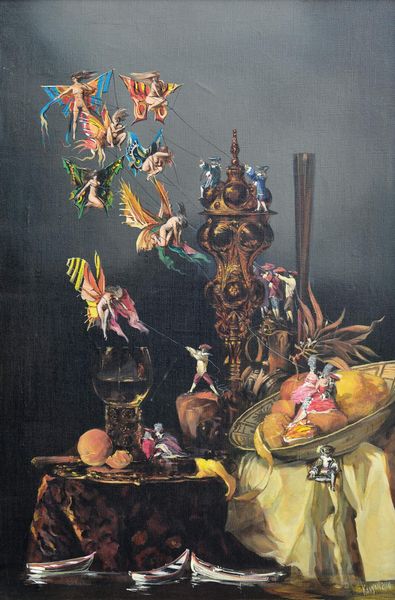
mixed-media, c-print, photography, glass, impasto
#
portrait
#
mixed-media
#
c-print
#
photography
#
glass
#
impasto
#
pop-art
#
food photography
Copyright: Audrey Flack,Fair Use
Editor: We’re looking at Audrey Flack’s still life, "Parrots Live Forever," made using mixed media incorporating photography, c-print, and glass elements. It's strikingly opulent, almost excessive with its array of objects. How would you interpret this arrangement? Curator: Flack, deeply influenced by Pop Art, engages with the Vanitas tradition in a provocative way. Still lifes are typically symbolic reminders of mortality. How does Flack both embrace and subvert that tradition, considering the context of its making, the consumerist boom, and the rising status of female artists who took imagery and presentation control of their own work? Editor: I see the connection to traditional still lifes, but the vibrancy feels like the opposite of those somber reminders. Curator: Precisely! This abundance challenges the traditional restraint, almost parodying it, and using new approaches with photo-realist sensibilities. It directly questions who this art is made for and how it's intended to circulate in the culture industry. This abundance screams against the usual lessons in temperance, doesn’t it? Think about how advertising also changed rapidly to become more assertive as well. How do you see the role of photography fitting into that message? Editor: The realism brought in through the photography and the glossy finish seem to highlight the artificiality of it all, but it feels real at the same time. Curator: It's a reflection of constructed realities, mass media, and a deliberate attempt to blur the lines between ‘high’ and ‘low’ art, and this commentary resonates profoundly even today as social media has altered many traditions and aesthetics, including that of self-representation and the still life itself. It encourages questioning of how we consume and assign meaning to imagery within consumer culture. Editor: I never really thought about Pop Art having ties to artwork from centuries prior, it has me considering it from a different angle now. Curator: That intersection—linking art history to contemporary visual culture—reveals just how much art is always in conversation with its predecessors and surrounding socio-political forces.
Comments
No comments
Be the first to comment and join the conversation on the ultimate creative platform.

